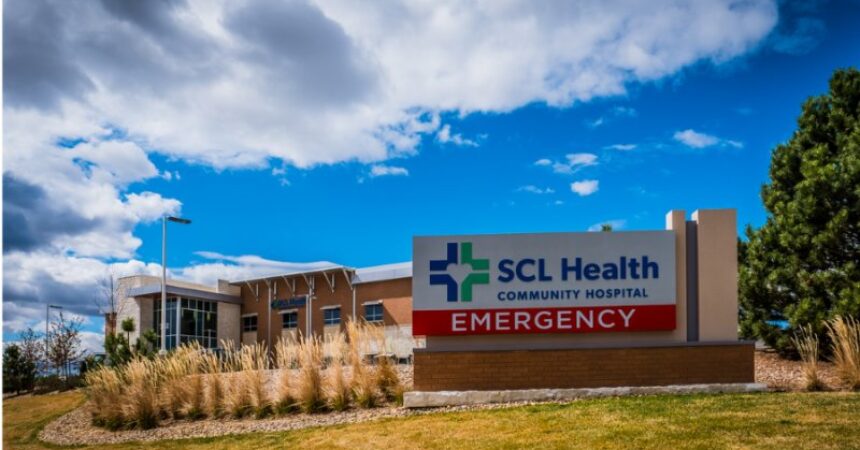In 1864, Sisters of Charity of Leavenworth founded SCL Health to improve the health of the communities in which it serves. As part of its commitment to delivering outstanding patient care, it continues to transform many of its daily operations. It provides comprehensive, coordinated care to its more than 150 physician clinics, 80 hospitals, and a number of home health, hospice, mental health, and safety-net services. To improve health in its communities, it invested 9 percent of revenue or $255 million in 2019.
What is meant by SCL in SCL Health?
It’s the Sisters of Charity of Leavenworth. It was the sisters who provided much of the funding for our hospitals before there was health insurance or federal programs such as Medicare. In order to collect handouts from miners and cowboys, they boldly entered smoky saloons.
In healthcare, what is SCL?
It was in the 1960s that the Sisters of Charity of Leavenworth conducted a comprehensive examination that resulted in a renewed commitment to healthcare, a new delegation of authority, and finally the formation of SCL Health.
How does SCL health work in Colorado?
Millions of people in Colorado and Montana are served by SCL Health, a growing nonprofit health system. The mission of the Foundation is to recruit physicians and advanced practice providers who share our faith in compassionate care and our vision for it.
It offers a variety of health paths for you to choose from. There are a lot of opportunities ahead for you in the future.
As a leading nonprofit healthcare organization and health care system, it now offers high-quality, accessible, and affordable health care to more patients in Utah, Idaho, Nevada, Colorado, Montana, Wyoming, and Kansas.
Medical and administrative leadership is provided by the SCL Medical Group to our employed physicians and advanced practice providers throughout the regions we serve. Listed below are the cities where these companies are located:
- Region of Greater Denver, Colorado
- The Grand Junction region of Colorado
- The Billings area of Montana
- A town in Montana called Butte
- The Miles City area in Montana
What is SCL Health worth?
According to the December 31, 2019 report, cash and investments (including amounts due from clients and brokers) stood at $2.8 billion (a total of 405 days of cash and investments on hand), an increase of $395.4 million from the previous year.
Is SCL Health a religious organization?
Catholic: A Catholic hospital operated by SCL Health will retain its distinctive name and operate similarly to before the merger.
Does SCL Health have a nonprofit status?
The mission of SCL Health, a faith-based, nonprofit healthcare organization, is to improve the health of vulnerable and poor individuals and communities in our service area.
SCL Health Denver: what is it?
Medical care is provided to individuals and families throughout the Denver metro area and Boulder area by SCL Health Medical Group. A total of about 150 physicians and advanced practice clinicians are part of this network, which consists of over 40 primary care clinics and specialty clinics.
SCL Health has how many employees?
A total of 15,000 employees are work there. A faith-based nonprofit organization with headquarters in Broomfield, Colorado, it operates eight acute care hospitals, three safety net clinics, a children’s mental health center, and over 190 ambulatory services centers throughout Colorado and Montana, employing more than 15,000 people.
SCL Health has how many locations?
With more than 150 physician clinics, eight hospitals, and home health, hospice, mental health, and safety net services in Colorado and Montana, our $2.8 billion health network provides comprehensive, coordinated care provided by Sisters of Charity of Leavenworth.
How does SCL Health compare with magnet hospitals?
Magnet recognition is only awarded to a small and select group of U.S. healthcare organizations. In Montana, St. Vincent Healthcare is the third Magnet-designated organization. BJ Gilmore, president, and CEO of St. John’s Hospital said magnet recognition provides the best benchmark for evaluating the quality of patient care in the community.
What is the Electronic Health Record (EHR) used by SCL?
The Nuance DAX (Data Analysis Expressions) platform is used by SCL Health for telehealth and in-person exams in cardiology, orthopedics, and primary care. In conjunction with the consent of the patient, the EHR captures, contextualizes, and documents patients and providers discussing symptoms, diagnoses, and treatments.
Is SCL Health well-rated by employees?
Based on 845 anonymous reviews on Glassdoor, their employees rate it 3.6 out of 5 stars.
Is it possible to get a job at SCL Health?
You can apply for a job at SCL Health by browsing the current openings and finding a job near you. You should prepare yourself for tough questions once you receive a positive response from them.
Is SCL Health a good place to work?
In total, over 844 reviews have been left by its employees, giving the company an overall rating of 3.6 out of 5. The majority of employees believe it is a good employer, with 69% recommending the company to a friend and 61% feeling positive about the company. The last 12 months have seen a decrease in this rating of -2%. A total of 808 anonymous reviews were collected on Glassdoor.
What is the interview experience like at SCL Health according to job seekers?
Its interview process is rated as positive by 58% of job seekers. During their interview, candidates give an average difficulty rating of 2.6 (5 being the highest).
St. Mary’s Hospital Grand Junction – who owns it?
As part of the SCL Health merger, the parent company of St. Mary’s Medical Center in Grand Junction plans to merge with Intermountain Healthcare of Utah. It has about 38,000 employees across Utah, Idaho, Wyoming, Nevada, Montana, and Alaska in 1,113 hospitals, clinics, laboratories, and other medical offices.
SCL Health was bought out by whom?
A healthcare organization in the Intermountain West
The Colorado attorney general’s office has approved the merger between Salt Lake City’s Intermountain Healthcare and Colorado’s SCL Health.
SCL Health and Intermountain Health merge, creating a $12 billion system
After signing a letter of intent in September 2021, Intermountain and SCL Health initially announced merger plans. Despite ongoing COVID-19 challenges, both nonprofits agreed to prioritize patient and provider well-being.
- Through this deal, Intermountain becomes more of a regional player with its Utah-based operations.
- Intermountain expands into new states with SCL, including Colorado, where SCL has a considerable presence. According to a previous report from Fitch Ratings, SCL has the largest market share in western Colorado and treats about one in seven inpatient cases. Montana’s nonprofit system is also leading, according to Fitch.
- As executives previously noted, Intermountain failed bid to merge with Sanford Health in late 2020 signaled the system was open to a partner and expanding outside its core market.
- As a result of controversy arising from Kelby Krabbenhoft’s refusal to wear a mask during the pandemic, the Intermountain-Sanford merger unraveled.
- In the new entity, Intermountain and SCL will be led by Marc Harrison, Intermountain’s current CEO. Harrison said in a statement that the merger would create a healthcare model for the future that would focus on keeping people healthy and proactively addressing causes of illness.
- Executive sponsor Lydia Jumonville, CEO of SCL, will work alongside Harrison and serve on the board to integrate the two systems. The board will be led by Mike Leavitt, former HHS secretary under George W. Bush. Additionally, Leavitt has served as governor of Utah.
- Although this merger was successful, other recent mergers have been stymied by antitrust officials. Despite legal challenges from the Federal Trade Commission and the state’s attorney general, Rhode Island’s two largest health systems have scrapped merger plans.
It is a priority of the Biden administration to combat consolidation in the healthcare industry. An executive order has been issued calling on antitrust agencies to review and revise merger guidelines.
A merger of nonprofits Intermountain Healthcare and SCL Health closes with 33 hospitals
SCL Health and Intermountain Healthcare have merged to form a nonprofit health system with 33 hospitals in Salt Lake City.
Intermountain and SCL Health merge, creating 33 hospitals
- The company operates four hospitals in Colorado, including Lutheran Medical Center in Wheat Ridge, Good Samaritan Medical Center in Lafayette, Saint Joseph Hospital in Denver, and St. Mary’s Hospital and Medical Center in Grand Junction.
- A number of SCL Health’s hospitals are also located in Montana. Throughout Utah, Idaho, and Nevada, Intermountain Healthcare operates 24 hospitals.
It will have changes to its corporate governance post-merger, but the Colorado hospitals will function as they did pre-merger, with no major changes to their charitable purposes, and no assets will leave Colorado as a result of the merger, according to Natalie Hanlon Leh, acting attorney general for the review at the Colorado Department of Law.
The Community Boards of all Colorado hospitals will continue to oversee their facilities and operations, and their hospitals will remain in Colorado.
Additionally, SCL Health and Intermountain agreed that due to the merger, there will be no layoffs or downsizing, and clinical facilities will not be moved, closed, or consolidated.
Although some of the new organization’s hospitals will maintain their existing operating practices, they will operate under the Intermountain Healthcare brand.
The closing made Intermountain Healthcare the eleventh largest nonprofit system in the country.
According to the announcement, the organization employs more than 59,000 people, runs 385 clinics in seven states, and provides health insurance to 1 million Utah and Idaho residents. During September’s unveiling, leaders from the merged organizations said the new entity is expected to generate roughly $14.2 billion in annual revenue.
As a result of this merger, the hospital will develop a model that keeps people healthy and addresses causes of illness proactively, according to President and CEO Marc Harrison, M.D., in a statement released. In the future, the merger will serve as a model for healthcare throughout the country.
SCL and the department had “extensive communications” since the department reviewed thousands of pages of documents from both organizations. Furthermore, both organizations told the state department that the deal would not result in “material layoffs or downsizing, nor will there be any moving, closing, or consolidating of clinical facilities.”
Plan to form a $14B system with 33 hospitals by Intermountain Healthcare and SCL Health
In announcing plans to merge, Utah-based Intermountain Healthcare and Colorado-based SCL Health will form a 33-hospital healthcare system. Both nonprofit systems aim to finalize the agreement by the end of 2021 and combine by the beginning of 2022 pending approval.
In Utah, Idaho, Nevada, Colorado, Montana, and Kansas, the entity would employ more than 58,000 people. According to Intermountain CEO and President Marc Harrison, M.D., it would also cover roughly 1 million people and bring in approximately $14 billion in revenue annually.
The Merger of hospitals raises cost and care questions
As SCL and Utah-based Intermountain Healthcare near a merger, questions have been raised about what will happen to the money afterward, and how the Western Slope’s health care landscape will change.
- Over the course of several years, the eight Colorado and Montana hospitals owned by SCL, which owns Grand Junction’s St. Mary’s Medical Center, have accumulated more than $1.5 billion in accumulated profits.
- A total of $459 million of that $1.5 billion comes from St. Mary’s alone.
- A “donation” of more than $12 million to “SCL Health Front Range” is also included in St. Mary’s 2020 tax disclosures. The Good Samaritan Hospital and Lutheran Hospital are being rebuilt just a few miles west of SCL Front Range’s current Wheat Ridge location as part of a $650 million project.
- The Church of Jesus Christ of Latter-day Saints founded Intermountain in 1974, and the company operates SelectHealth, which currently has more than 750,000 members.
- It has 153 hospitals and clinics across Colorado, Montana, and Kansas, compared to SCL, based in Broomfield but founded by the Sisters of Charity of Leavenworth. Based on its most recent IRS tax filing, it controlled about $6 billion in assets and $1.5 billion in receivables in 2020.
- An SCL balance sheet published on its website shows that it is invested roughly $2.1 billion in hospitals and $2.9 billion in Wall Street as of September 30, 2021.
- A total of $255 million was invested by SCL Health to improve health in its communities in 2019.
When the company is completely merging with SCL Health?
SCL and Intermountain Healthcare have completed their merger to create the largest nonprofit health system in the country by April 7, 2022.
Which hospitals are parts of SCL Health Colorado?
List of hospitals
- Medical Center of Good Samaritan.
- Medical Center Lutheran.
- The Holy Rosary Healthcare Center.
- Medical Center of Platte Valley.
- The Hospital of St. Mary.
- Hospital St. Francis (now part of the University of Kansas Healthcare System – St. Francis Campus)
- A hospital run by Saint Joseph.
- Healthcare Center at St. James.
Advanced productivity and collaboration tools for SCL Health’s patients and providers
By using Google Workspace and partnering with SADA, SCL Health provides a secure, efficient, and integrated platform for enhancing patient and provider experiences.
- Collaborating with modern technology
Collaboration and productivity solutions were a top concern when SCL considered updating them. On-premise solutions used by its employees were complex, requiring significant maintenance and administration resources. The IT environments created by individual hospitals and facilities also impeded organizational efficiency.
Staff at SCL Health was limited by outdated workstations and email solutions that prevented them from working efficiently and effectively.
It completed its migration to Google Workspace with help from Google Cloud Premier Partner SADA. A key part of SCL Health’s success has been the training of associates and the change management assistance SADA provided to streamline the rollout of the new tools.
2. Innovation and continuous improvement
Due to its use of Google Workspace, SCL Health can enhance clinical systems, improve processes, and deliver new, more advanced employee experiences and patient care faster.
The new ways of working at SCL are resulting in increasing enthusiasm among employees because collaboration has been streamlined and processes have been simplified. The cost savings from Google Workspace help it to provide highly responsive, modern healthcare services to its patients while keeping healthcare costs in check.
3. Increasing engagement through real-time collaboration
A dramatic change has occurred in how SCL Health associates communicate within and between departments since switching to Google Workspace.
SCL also uses Docs and Slides to edit documents instantly and collaboratively. By reducing email correspondence, we can reduce the possibility of delays and errors caused by mismatched document versions. In addition, email attachments can be made more secure by utilizing this method.
Google’s products and services have also been added to the healthcare provider’s portfolio. To enable its associates to be untethered from their workstations, SCL uses Google Voice and Chromebooks with Pixel smartphones. In the U.S., it was the first healthcare organization to provide all nursing and allied health professionals with Pixel devices.
With Google Voice, SCL Health was also able to decommission many of its expensive landline telephones, enabling employees on and off-site to stay connected without losing their connection.
Moreover, it benefits from Google Cloud’s commitment to continually enhance Google Workspace with updated features that enhance employee productivity. A major advantage of Google Workspace over more siloed, standalone tools is its highly integrated nature.










